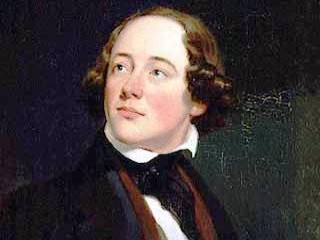
Martin Johnson Heade biography
Date of birth : 1819-08-11
Date of death : 1904-09-04
Birthplace : Lumberville, Pennsylvania, U.S.
Nationality : American
Category : Famous Figures
Last modified : 2011-11-22
Credited as : painter, paintings, luminist style
Martin Johnson Heade, American painter, was a central figure in American luminism, a movement primarily concerned with the painting of light.
Martin Johnson Heade was born on Aug. 11, 1819, in Lumberville, Pa. He received his early training in painting from the primitive artist Edward Hicks. About 1838 Heade went to Rome to study; during the 2 years there he painted several portraits, which were exhibited later in New York City and Philadelphia. Again in Rome in 1848, he painted his only extant genre piece, the Roman Newsboys. A year later Heade traveled to St. Louis and Chicago; by 1854 he had moved east to Trenton, N.J. Later he was at work in Providence and along the Rhode Island coast, where he painted his first landscapes in a somewhat hard and flat style.
A new phase of development came in 1859, when Heade took a studio in New York City. There he formed a close friendship with the artist Frederic E. Church. Probably under his influence, Heade's work during the next decade became more dramatic, his subjects more exotic, and his colors more intense.
In the early 1860s Heade traveled often along the New England coast in search of subjects to paint, and he found them most frequently among the salt marshes. During a journey inland he painted one of his finest pictures of this period, Lake George (1862). Heade's luminist style was now characterized by firm draftsmanship, cool and clear lighting, and a sense of timeless suspension. While painting along the Massachusetts coast, he met the Reverend James C. Fletcher, who persuaded him to go to Brazil. There in 1863 Heade began a new type of painting—the scientific depiction of hummingbirds in their natural habitat. For his accomplishments he was knighted by Dom Pedro II, Emperor of Brazil, although a subsequent effort to publish chromolithographs after these paintings in London brought little success. By 1865 Heade was back in New York. Two years later he was painting in Central America.
During this period Heade began to paint still lifes, especially flowers—roses, orchids, and magnolias—an interest he maintained throughout the rest of his career. In the late 1870s he settled down in New York City for a longer period. His style became looser and more painterly, although he retained his sure sense for color, atmosphere, and texture. By 1883 he had bought a house in St. Augustine, Fla., and had married. For the most part he spent the last 20 years of his life in Florida. He still traveled, continuing to paint his familiar subjects up to his death on Sept. 4, 1904.



















